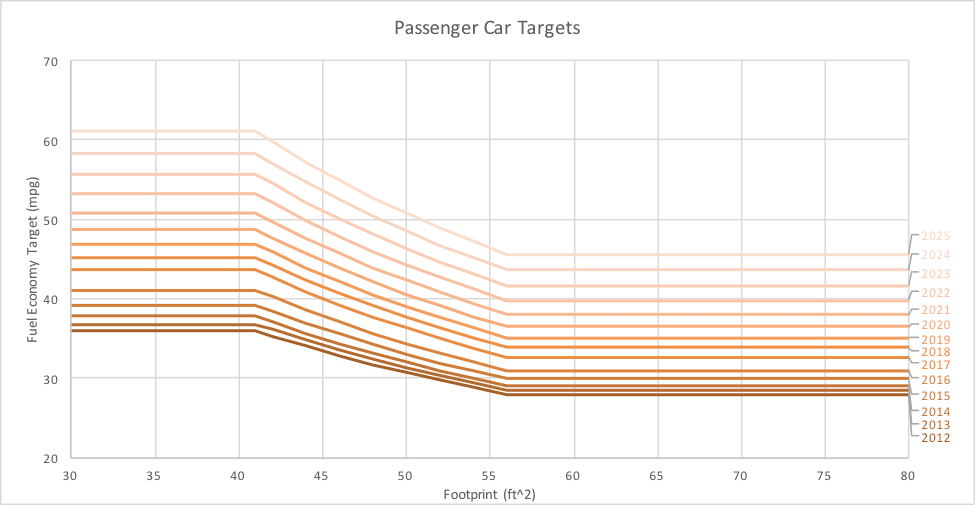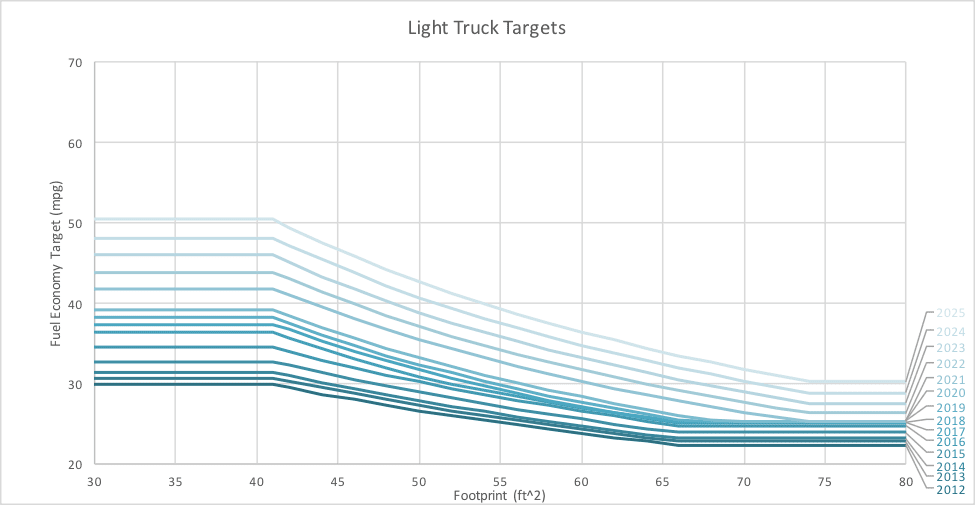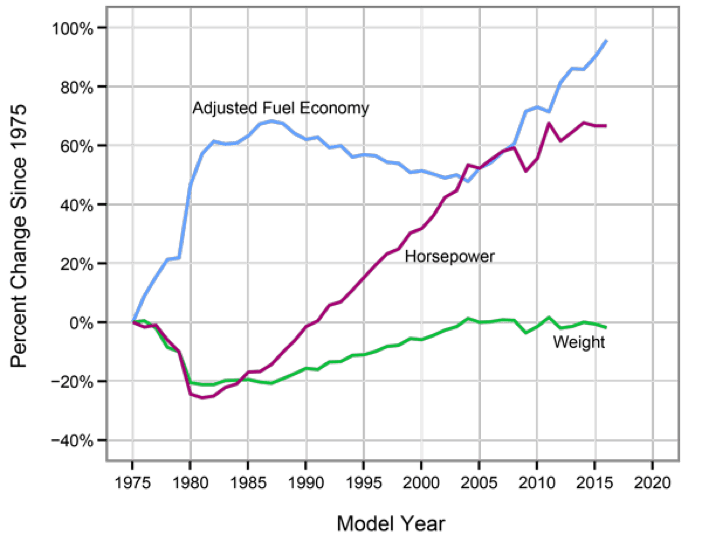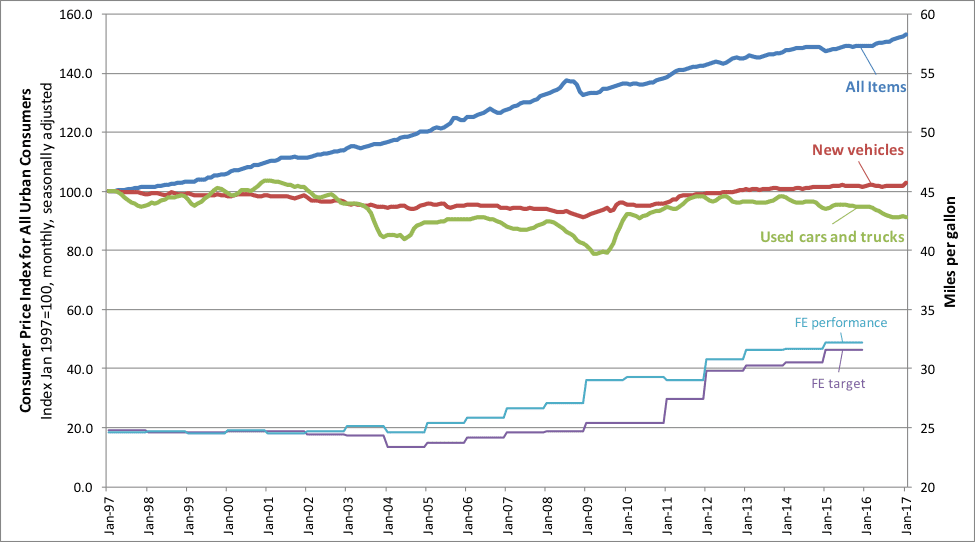At first glance, the fuel economy levels set by the standards seem high—very high. Consider the example above: in 2012 very few non-electric or non-hybrid cars with a footprint of 50 sq. ft. claimed to get 30 mpg or more on the window sticker, or label, that every car on a dealer’s lot displays. The reason for this discrepancy is that the targets set by the standards are not the same as that label fuel economy value. Rather, they are an initial estimate of fuel economy based on standardized laboratory testing conducted by the EPA.
This testing comprises two drive cycles in a controlled setting, and measures vehicle emissions and fuel, or energy, consumption (generally in units of gallons per mile or gallons per 100 miles). The city, or urban, driving test is mainly low speed, and includes many stops and starts. The highway test, on the other hand, is conducted at sustained, higher speeds. Combining the city fuel consumption result, weighted at 55%, with the highway fuel consumption at 45%, results in an overall, or “combined,” fuel consumption value. The mathematical inverse of fuel consumption is fuel economy. It is this two-cycle, combined value that each manufacturer must demonstrate meets the target.
The benefit of this scheme is that it’s good for comparing all vehicles equally, and repeatably. But the two test cycles don’t really come very close to capturing the wide variety of real-world driving or, consequently, real-world fuel economy—which is what those window stickers are supposed to reflect. Many factors affect the fuel/energy efficiency of vehicles in the real world, and no standardized test will perfectly estimate fuel economy for all drivers.
To give consumers a more accurate fuel economy estimate, the EPA conducts three other tests, which, when combined with the first two, lead to a new, 5-cycle, test result for each vehicle. It is the new 5-cycle adjusted fuel economy that we see on car and truck fuel economy labels. This adjusted fuel economy, as it’s also known, is lower than the fuel economy targets, and represents a more realistic estimate of real-world driving fuel economy. The additional tests take into account factors like cold start, air-conditioning usage, and different periods of high-speed and low-speed driving, stopping, and acceleration. Again, the results don’t perfectly represent the real world, but they are closer than the simpler two-cycle estimates used to certify vehicles against the standards. In fact, evidence suggests that the more fuel efficient a vehicle is, the greater the gap between two-cycle fuel economy, label (or adjusted) fuel economy, and actual, real-world fuel economy.
Testing all vehicles on these five test cycles would be arduous. Consequently, the EPA offers manufacturers a way to derive some of their vehicles’ 5-cycle city and highway label fuel economies from the results of only the city and highway test cycles. The derivation is a simple linear relation whose input is the city or highway fuel consumption, and whose output is the derived 5-cycle city or highway fuel consumption. EPA calculated the slope and intercept of these linear relations using actual 5-cycle test results from hundreds of vehicles in 2011–2016.
In summary, while adjusted fuel economy is more important to consumers, for practical purposes it doesn’t affect how manufacturers actually meet the CAFE and greenhouse gas standards.




